Punjabi Language

 Introduction
IntroductionPunjabi is one of the Indian languages that belongs to the outer-circle of the Indo-Aryan languages. It is distantly associated with English which is a member of the same Indo-European language family. Punjabi is spoken mainly in the states of Punjab both in India and Pakistan as well as in their Diasporas. It nearly resembles Hindi and Urdu and is spoken by approximately 88 million native speakers.
It is the 11th most widely spoken language in the world. Punjabi is the official language of the Indian state of Punjab and the shared state capital Chandigarh. It is one of the official languages of Delhi and the second language of Haryana.Punjabi is the provincial language of Punjab, the largest province of Pakistan. Though the majority of Punjabi speaking population live in Pakistan, the language has not yet gained official status in Pakistan.Punjabi is a successor of the chief language of medieval northern India called Sauraseni Prakrit.It emerged as an independent language in the 11th century from the Sauraseni Apabhramsa (a spoken colloquial dialect during the 5th century BC).
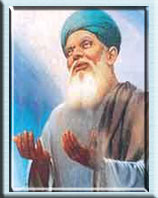 Many ancient Sufi mystics and later Guru Nanak Dev, the first Guru of the Sikhism started the literary tradition in Punjabi. The early Punjabi literature has had a very rich oral tradition and was principally spiritual in nature.Muslim Sufi, Sikh and Hindu writers composed many works in Punjabi between 1600 and 1850.
Baba Bulleh Shah was the most famous Punjabi Sufi poet who put Saraiki language culture into the Punjabi Language. Different dialects of Punjabi are in vogue in different parts. They are Majhi, Jhangochi or Rachnavi, Shahpuri, Pothowari, Hindko, Malwi, Doabi and Pwadhi.
Many ancient Sufi mystics and later Guru Nanak Dev, the first Guru of the Sikhism started the literary tradition in Punjabi. The early Punjabi literature has had a very rich oral tradition and was principally spiritual in nature.Muslim Sufi, Sikh and Hindu writers composed many works in Punjabi between 1600 and 1850.
Baba Bulleh Shah was the most famous Punjabi Sufi poet who put Saraiki language culture into the Punjabi Language. Different dialects of Punjabi are in vogue in different parts. They are Majhi, Jhangochi or Rachnavi, Shahpuri, Pothowari, Hindko, Malwi, Doabi and Pwadhi.
There are two main scripts which are used to write Punjabi. Punjabi speaking Muslims use Shahmukhi (Perso-Arabic script written from right to left). Punjabi speaking Sikhs write Punjabi in the Gurmukhi script, which was developed by Guru Andgad dev. Punjabi and Gurmukhi are considered as two different languages, the first as one what is in common use and the second as one used to write the Guru Granth Sahib. This is a wrong notion. Actually Punjabi is the language and Gurmukhi is one of its scripts. The Gurmukhi script was derived from Brahmi used for Asoka's edicts and was known long before the Guru along with the vowel signs. Learning punjabi is made easy.
 Punjabi Literature
Punjabi LiteraturePunjabi literary works found its opening only very late, even though Punjabi is an ancient language. Two different scripts viz. Shahmukhi and Gurumukhi are used to write Punjabi. The Gurmukhi script is based on Devanagri (the script in which Sanskrit was originally written). The Sikh scripture, Adi Grantha, known as Guru Granth Sahib is one of the earliest texts in Punjabi written in the Gurumukhi script. Guru Granth Sahib includes four hymns and one hundred and twelve slogas of Baba Fariduddin Shakargnj, a sufi saint and an eminent Punjabi poet who lived during 1173-1266 AD. Ekadasi Mahatmyam is another Punjabi prose of the olden Punjabi literature.
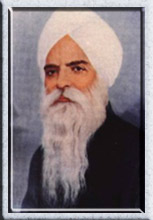 In spite of the Afghan invasion and internal battles in the middle ages, growth and development of Punjabi literature gradually found a new horizon. The founder of the Sikh religion, Guru Nanak (1469-1539) was the one who gave a stimulus to the growth of the language. The Guru Granth Sahib was compiled by Guru Arjun Dev (1563-1606), the fifth Guru. The tenth and last Guru, Guru Gobind Singh (1666-1708), composed several religious works, which were mainly in old Hindi. However his Candi-di-Var, depicting the battles of Goddess Durga with the demons, was done in Punjabi,.
In spite of the Afghan invasion and internal battles in the middle ages, growth and development of Punjabi literature gradually found a new horizon. The founder of the Sikh religion, Guru Nanak (1469-1539) was the one who gave a stimulus to the growth of the language. The Guru Granth Sahib was compiled by Guru Arjun Dev (1563-1606), the fifth Guru. The tenth and last Guru, Guru Gobind Singh (1666-1708), composed several religious works, which were mainly in old Hindi. However his Candi-di-Var, depicting the battles of Goddess Durga with the demons, was done in Punjabi,.
The period of the ten Sikh Gurus spanning for more than 2 centuries is considered as the golden era of Punjabi literature. The literary works of this period are mostly in prose form and are religious in nature. Janam-sakhis, bachans, sakhis, goshts, paramarathas, parchis and uthankas are the various forms of prose of this period. They revolve around the personality, teachings and anecdotes from the life of Guru Nanak. However, Vars, a kind of verse, in praise of the Almighty or the great warriors or kings were also composed during this period.
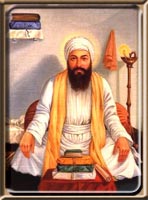 Muslim writers, during 1600 to 1850, have done several creative literary works in Punjabi.During the same period, Hindu and Sikh writers also have made their contribution to the Punjabi literature. Perso-Arabic, Nagari and Gurmukhi (derived from Nagari) are the three scripts that came to be used in the 17th century. A thesis on Islam, Bara Anva or the 'the Twelve Topics' was written by a Muslim poet named Abdullah. The compositions of several Muslim Sufi poets
came in purely in Punjabi. Bullhe Shah (1680-1758) is the most renowned Sufi poet whose Kafis (short poems of about six stanzas) are very popular. His contemporary, Ali Haidar (1689-1776) wrote a large number of Si-harfis or poems. These poems consist of 30 stanzas, the highlight of it being that each stanza begin with a letter of the Persian alphabet.
Muslim writers, during 1600 to 1850, have done several creative literary works in Punjabi.During the same period, Hindu and Sikh writers also have made their contribution to the Punjabi literature. Perso-Arabic, Nagari and Gurmukhi (derived from Nagari) are the three scripts that came to be used in the 17th century. A thesis on Islam, Bara Anva or the 'the Twelve Topics' was written by a Muslim poet named Abdullah. The compositions of several Muslim Sufi poets
came in purely in Punjabi. Bullhe Shah (1680-1758) is the most renowned Sufi poet whose Kafis (short poems of about six stanzas) are very popular. His contemporary, Ali Haidar (1689-1776) wrote a large number of Si-harfis or poems. These poems consist of 30 stanzas, the highlight of it being that each stanza begin with a letter of the Persian alphabet.Apart from this Waris Shah's qissa poetry, especially the tragic love story of Heer and Ranjha are also regarded as the masterpieces of the Punjabi literature before the start of the modern age. Poems on historical figures and stories formed the essence of the 18th century. Hamid's (1766-1776) Jang nama is one that substantiates this. Love, morality and Sufi mysticism were enshrined in verses written by poets like Arur, Rai, Isar Das, Kisan Singh Arif, Hidayatullah and Muhammad Buta.
After the British took over Punjab, and with the influence of the Hindu reform movements like the Arya Samaj and the Sanatan Dharma, the Hindi language gained prominence in Punjab. Thereafter Punjabi in the Gurmukhi script began to be used only by the Sikhs. The dawn of the modern Punjabi literature is attributed to the works of Bhai Vir Singh and Padmabhushana (1872-1957). The former is described as the 'Father of modern Punjabi literature'. Rana Surat Singh, a long narrative poem of 13,000 lines in verse is the famous composition of Padmabhushana.
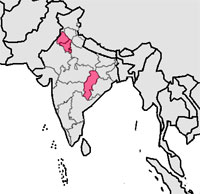 Puran Singh (1882 -1932), another great poet of this century, was conferred the title 'Tagore of Punjab'. He introduced free verse into Punjabi and rendered a number of Punjabi poems by Bhai Vir Singh into English. Mohammed Bakhsh, Fazal Shah, Ghulam Rasul, Kishan Singh Arif, Mansingh Kalidas and Muhammad Buta were among the well-known poets of the early 19th century. Kirpa Singh (1875-1939) and Dhani Ram Chatrik (1876-1954) were Puran
Singh's contemporaries. Kirpa Singh composed an epic Lakshmi Devi (1920). Dhani Ram Chatrik was the pioneer of romantic poetry in Punjabi. His works include Candan Vari, Himala,Ganga and Raa.Chatrik.
Puran Singh (1882 -1932), another great poet of this century, was conferred the title 'Tagore of Punjab'. He introduced free verse into Punjabi and rendered a number of Punjabi poems by Bhai Vir Singh into English. Mohammed Bakhsh, Fazal Shah, Ghulam Rasul, Kishan Singh Arif, Mansingh Kalidas and Muhammad Buta were among the well-known poets of the early 19th century. Kirpa Singh (1875-1939) and Dhani Ram Chatrik (1876-1954) were Puran
Singh's contemporaries. Kirpa Singh composed an epic Lakshmi Devi (1920). Dhani Ram Chatrik was the pioneer of romantic poetry in Punjabi. His works include Candan Vari, Himala,Ganga and Raa.Chatrik.
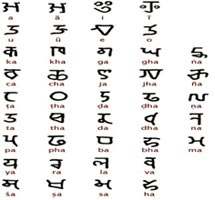 The period immediately after Independence is described as the 'Amrita Pritam-Mohan Singh Era'of Punjabi poetry. Amrita Pritam, another celebrated poet of Punjabi literature, is known for her works on the tragedy of the partition. Mohan Singh (1905-1978) brought in a modern outlook to Punjabi literature. Sawe Pattar (1936) and Kasumbra (1937) are his famous works. Other noteworthy poets in Punjabi include Pritam Singh Safir, Bawa Balwant, Santosh Singh Dhir, Takht Singh, Harbhajan Singh and Prabhjot Kaur. Amrita Pritam, Nanak Singh, Jaswant Singh
Kanwal, Narindarpal Singh, Kartar Singh Duggal, Surindar Singh Narula, Balwant Gargi, Jagjit Singh Anand, Ishwar Chitarkar, Suba Singh are noted modern fiction writers in Punjabi. Nanak Singh was the reknowned novelist and short story writer while Gurbakhsh Singh and I.C.Nanda were eminent dramatists. Preet Ladhi, Panja Darya, Panjabi Dunia, Arsi, Alocna and Sahitya Samachara are the leading Punjabi journals that share the credit of promoting Punjabi literature.
The period immediately after Independence is described as the 'Amrita Pritam-Mohan Singh Era'of Punjabi poetry. Amrita Pritam, another celebrated poet of Punjabi literature, is known for her works on the tragedy of the partition. Mohan Singh (1905-1978) brought in a modern outlook to Punjabi literature. Sawe Pattar (1936) and Kasumbra (1937) are his famous works. Other noteworthy poets in Punjabi include Pritam Singh Safir, Bawa Balwant, Santosh Singh Dhir, Takht Singh, Harbhajan Singh and Prabhjot Kaur. Amrita Pritam, Nanak Singh, Jaswant Singh
Kanwal, Narindarpal Singh, Kartar Singh Duggal, Surindar Singh Narula, Balwant Gargi, Jagjit Singh Anand, Ishwar Chitarkar, Suba Singh are noted modern fiction writers in Punjabi. Nanak Singh was the reknowned novelist and short story writer while Gurbakhsh Singh and I.C.Nanda were eminent dramatists. Preet Ladhi, Panja Darya, Panjabi Dunia, Arsi, Alocna and Sahitya Samachara are the leading Punjabi journals that share the credit of promoting Punjabi literature.


